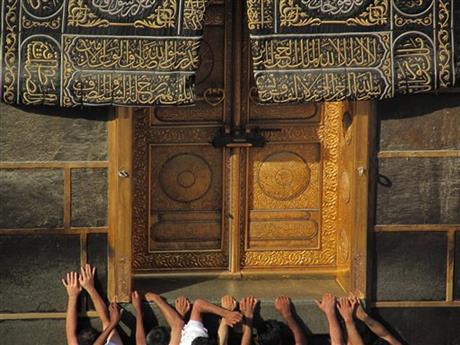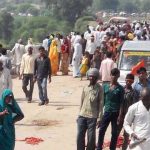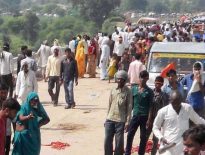MECCA, Saudi Arabia (AP) — Muslims from across the world poured Sunday into a sprawling tent city in the Saudi desert before the start of the annual Islamic hajj pilgrimage, but the number of the pilgrims this year has been reduced in part by concerns over a respiratory virus centered in the Arabian peninsula.

More than 2 million pilgrims — about 1 million fewer than last year — streamed from the holy city of Mecca to a huge tent encampment in Mina about five kilometers (three miles) away to begin preparations for the hajj with a day of prayer and supplication.
Saudi authorities sharply cut back on visas for groups such as the elderly, pregnant women and those with chronic illnesses as a precaution against a new respiratory virus related to SARS that has killed more than 50 people in the kingdom this past year. The Saudi health minister, Abdullah al-Rabiah, said late Saturday that no cases of the coronavirus infection have been detected among pilgrims.
Further visa restrictions were imposed because of massive construction projects underway in Mecca.
The hajj, a central pillar of Islam and one that able-bodied Muslims must make once in their lives, is a four-day spiritual cleansing based on centuries of interpretation of the traditions of Prophet Muhammad.
Muslims traditionally visit the mosque where the Prophet Muhammad is buried in the city of Medina, and begin the hajj in Mecca with a set of rituals at the Kaaba, the cube-shaped structure in the city’s Grand Mosque that Muslims around the world face in prayer five times a day. When there, Muslims circle the Kaaba counterclockwise with their hearts tilted toward it.
“Labayk Allahuma Labayk,” or “Here I am, God, answering your call. Here I am,” chant thousands of Muslims throughout the pilgrimage as individual voices become engulfed in a sea of worshippers all dressed in seamless white terrycloth robes and shoes. The simple, mandatory outfit is meant to foster unity, equality and humility.
From Mina, the pilgrims will head on Monday to the area of Mount Arafat near a hill called Jabal al-Rahman, meaning Mountain of Mercy.
It is in Mount Arafat, about 20 kilometers (12 miles) east of Mecca, that Muslims believe the Prophet Muhammad called on people to abolish their feuds and put aside their racial, economic and tribal differences. Some 1,400 years later, Muslims believe on that day and at this place, the gates of heaven are open for prayers to be answered.
This year, though, some pilgrims are wearing masks as a precaution against the Middle East respiratory syndrome, which has stricken nearly 100 people, most of them in Saudi Arabia and the Middle East. The new virus is related to SARS, or severe acute respiratory syndrome, which killed hundreds in a global outbreak in 2003. It belongs to a family of viruses that most often causes the common cold.
Fears of a possible outbreak among pilgrims have prompted Saudi authorities to reduce quotas by 20 percent for hajj visas for each country this year. Ismail bin Mohammed, the head of the Medical Supply Directorate at the Health Department in Mecca, was quoted in the Saudi state-owned Arab News website saying there are eight hospitals and 24 health centers set up at points along the pilgrimage.
In recent years, the hajj also has reflected the concerns of unrest and bloodshed across the Arab world, including the civil war in Syria that has claimed more than 100,000 lives and sent millions of people fleeing across borders.
“Syria is suffering and that means that the Arabs and the Muslims are also suffering,” said Abdel-Karim Ahmed while in Mecca before heading to Mina. “I ask God … to lift the suffering of the Syrian people and stop the bloodshed.”
Similarly, Egyptian pilgrim Essam Hassouna said he is praying for his country, which saw its worst violence in August when more than 1,000 people were killed in clashes after the military ousted President Mohammed Morsi from power.
“I am praying to God to bring stability and unity to Egypt so we can advance and prosper,” Hassouna said. “As an Egyptian, it is more important for me to pray for Egypt rather than to pray for myself and my children.”
Though hajj is an ancient ritual, innovations have modified its rites. Pilgrims are often seen using touch screen technology to read the Quran, rather than carrying it in printed form. The Grand Mosque in Mecca has also changed dramatically, expanding to accommodate the growing number of pilgrims. The first phase of the mosque’s new expansion project is estimated to accommodate 450,000 worshipers this hajj.
___
Associated Press writers Aya Batrawy in Cairo and Abdullah al-Shihri in Riyadh contributed to this report.





